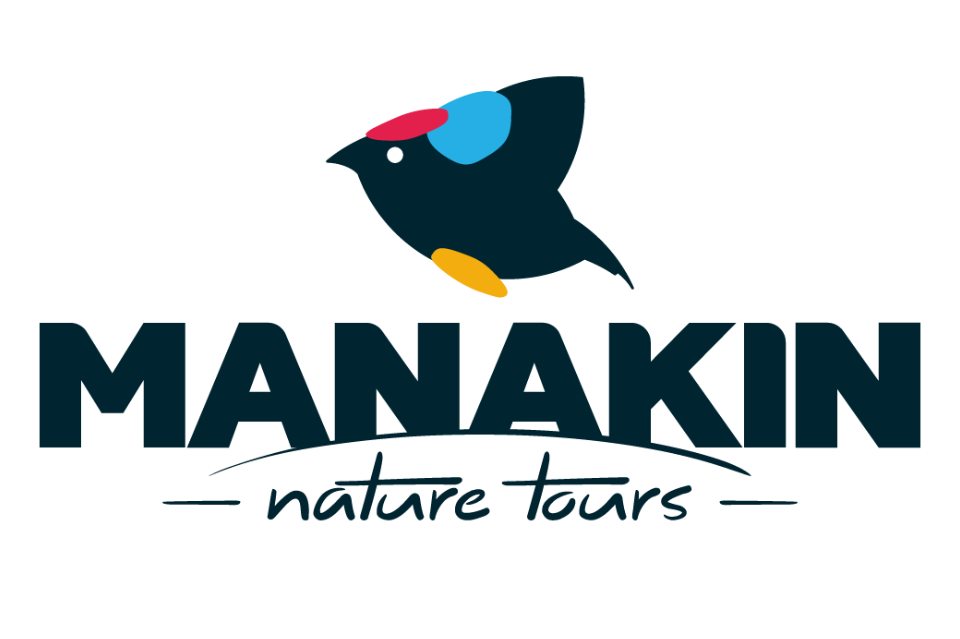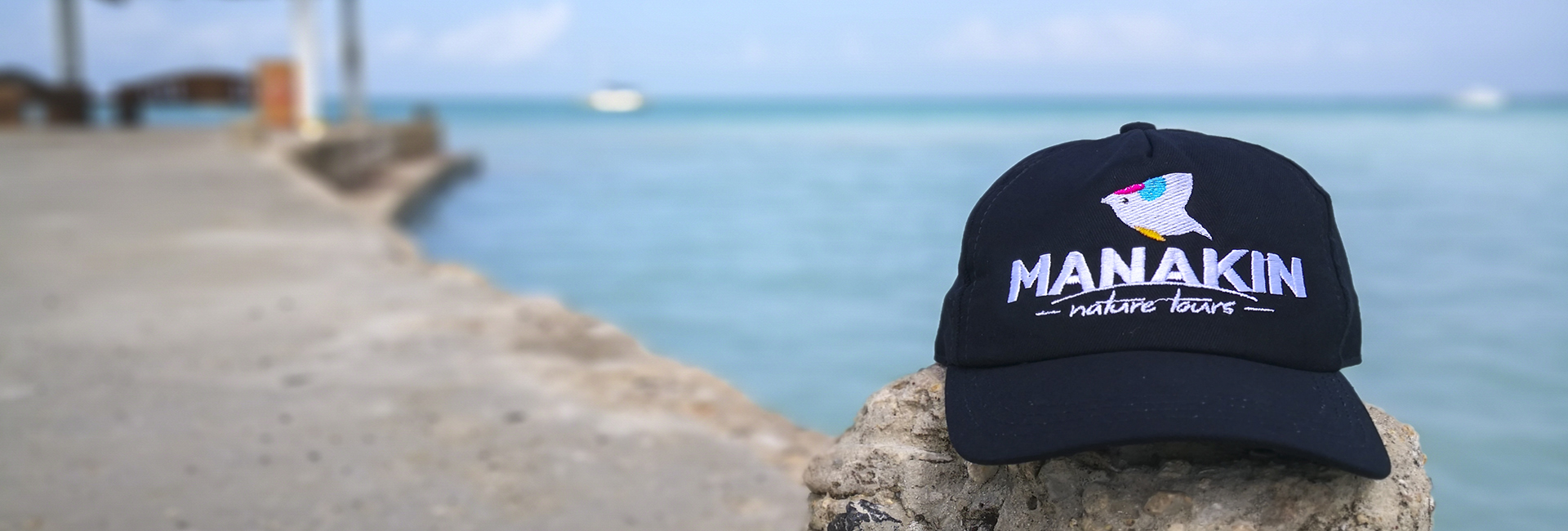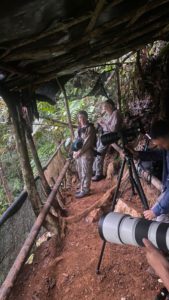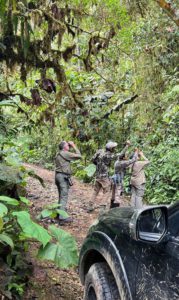Trip Report – Tailor Made Tour: Western, Central andes and Caribbean Coast
PETER & JENNIFER ALLSOPP
DATE: 28th of Aug to 15th of Sep 2025
TAILOR MADE TOUR: Western, Central Andes and Caribbean Coast
GUIA: Manuel Espejo
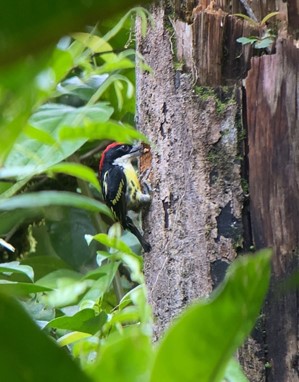
Five-colored barbet building a nest in San Cipriano, a sought-after species of biogeographic Choco
INTRO
This is 17 day tailor made trip for Peter and Jennifer Allsopp from Brisbane, Australia; Peter is a sugar cane scientist and entomologist with more than 80 new spp of Bettles described, The Cauca valley of Colombia is riddle with sugar cane plantations that fuel the national and regional economy is also the where the HQ of CENICAÑA is located, a non-government organization dedicated to the science of sugar cane, Peter was part of the staff of a world meeting of scientist in the city of Cali, this was the perfect excuse for a birding adventure through Colombia after the conferences and the lectures, and in this town is where this adventure begins.
Day 1: Km 18 Cloud Forest in Cali
This adventure start picking-up Peter and Jennifer at the Marriot hotel in Cali, 5:00 am the conferences about sugar cane end last night at midnight, after a quick introduction with the guide and Juan Guillermo The Driver the group depart to Km 18 a Cloud Forest and a IBA(Important Bird Area) for the next 3 nights staying in a small bed and breakfast with feeders and surrounded by forest, La Florida, we arrive early in the morning to enjoy the feeders: Multicolored tanager, Colombian Chachalaca, Booted racket-tail and a plethora of other tanagers and humming birds, a moth trap with some warblers and even a Streak-capped Treehunter, Little Tinamou and Chestnut-wood quails also show to eat grain, for Lunch we visit a little cozy Italian restaurant 1 mile from the place called Mamma mia, we continue enjoying the feeders for the rest of tha afternoon and finish early for the next day.
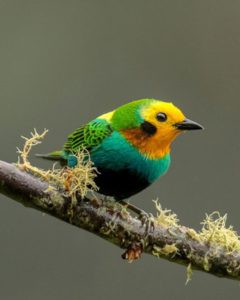
Multicolored Tanager at the feeders in La Florida Km 18
Day 2: Doña Dora and El Danubio at Anchicaya Valley
The group depart at 4:00 am in the morning, our destination is Doña Dora a famous truckers stop in the old road from Cali to the Port of Buenaventura, this place is located in the Anchicaya valley a lush rainforest inside los Farallones de Cali National Park. After arrival at 5 am and some coffee we start a hike the Cock of the Rock Lek, after a hike inside the rain forest we arrive to a hide where we enjoy the cock of the rocks from close! 7 males making displays 6 feet from us! After 45 minutes we decide to come back to the main building for breakfast but we take a break at a moth trap to enjoy some uncommon species like the Ochre-breasted tanager and the Sooty-headed wren. We take breakfast in from of the feeders: Toucan Barbet, Glistening green tanager, black-headed brushfinch, black-chinned mountain tanager and much more just at breakfast. We decide to explore further in the Anchicaya valley with the company of Junior, a local guide from the Danubio community 20 km from doña dora as we lost altitude we find the spectacular scarlet-and-white tanager and the gray-and-gold tanager, also barred puffbird and choco toucans. The Danubio area is full of natural pools and surrounded by pristine nature, in the last years the armed conflict is back to the area harming the local ecotourism iniciatives, with the help of Junior we visited the area, feel safe and give some hope to the local communities to keep working in tourism. We come back to doña dora for a late lunch and to drive back to Km 18.
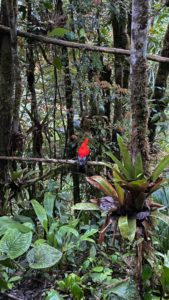 |
|
Day 3: San Cipriano Forest Reserve with Never
Living at 4:30 am again, our destination is San Cipriano, A Forest Reserve and Watershed of the City of Buenaventura, Ecotourism iniciatives are in the area with the leadership of the community but what make the town famous are the Brujitas, a DIY train made with a motorbike, woodplanks and bearings, this Brujitas are the main transportation in San Cipriano, after a 15 min ride in this little train we arrive to San Cirpiano where we meet never our local guide, Never took us to a hike through a off-road and some trails to see: five-colored barbet, spot-crown barbet, broad-billed motmot, black-breasted puffbird, lanceolated monklet, Choco and Chestnut-mandible toucans, blue-whiskered tanager, stub-tailed antbird, Pacific Flatbill among others. Lunch was red snapper from the pacific cook by the locals, we enjoy the birds but also the cultural experience during the weekend, the place was full of Locals enjoying the river, the nature, the local moonshine “biche” and the local cuisine, one of the best in the country, in the afternoon a rainstorm hit us hard and we decide to call it a day without complain, is the way of the rainforest.
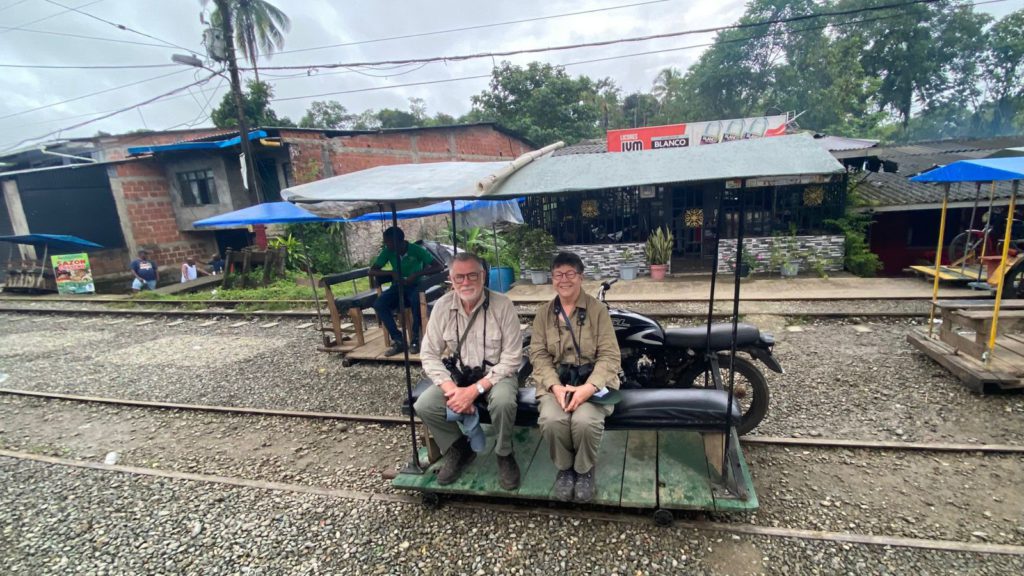
Peter and Jennifer ready to ride the brujita on our way to San Cipriano
Day 4: Sonso Wetlands and crossing the Cauca Valley.
After the last 3 nights in the western andes is time to get to the central andes crossing the cauca valley with one planed stop for birding in the middle of the valley in the Sonso Wetlands (part of the Ramsar Convention), after arrival we meet with Nataly part of the local ecoturism iniciative called Osprey, we hike through the marshland and the observation tower we spot a lot of Common potoos, grayish piculets, hundreds of spectacled parrolets, we took a boat and navigate through the cauca river spotting Great antshrike and Jet antbird and a shorebird and waterbird galore hiting 88 species in one morning, we finish our visit to sonso wetlands with a Sancocho, the traditional farmer soup, at Osprey Lodge, for desert we decide spot in some wild flowers to wait for the Ruby Topaz hummingbird before continue our trip to the city of Pereira in the central andes, more exactly to the corregimiento of la Florida(a submunicipalityy with at least 1000 habitants).
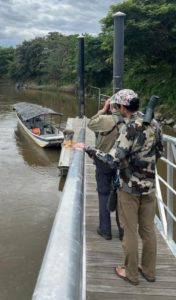 Cauca river at the docks in Sonso Wetlands |
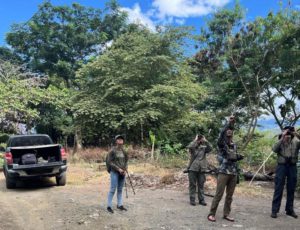 Birding in the Dry Forest with Nathaly |
Day 5: Santuary for Fauna & Flora Otun-Quimbaya
5 am and we are already in the car rolling the 12 km through the sanctuary to El Cedral, a small hostel for nature lovers and hikers and the end of the road, before breakfast we head to the near by bridge over the Otun river, what a surprise we find a family of torrent ducks, A couple of adults and a pair of chicks, a torrent tyrannulet in the rocks close by and white-capped dipper wading through the rocks, we decide to eat our breakfast and start birding our way back to la Florida, we hike and drive through the 12 km of sanctuary: Cauca guan, Red-ruffed fruitcrow, more torrent ducks, marble-faced and variegated bristle tyrants, strong-billed woodcreeper, multicolored tanager in the wild!, crested-ant tanagers, rufous-breasted flycatcher, bronze-olive pigmy-tyrant, uniform antshrike, Collared trogon, spotted barbtail. We arrive at noon to la Florida for a traditional lunch at Hierbabuena, is our driver birthday so we celebrate with some cake and continue our drive to Manizales at 8000 feet in the central andes.
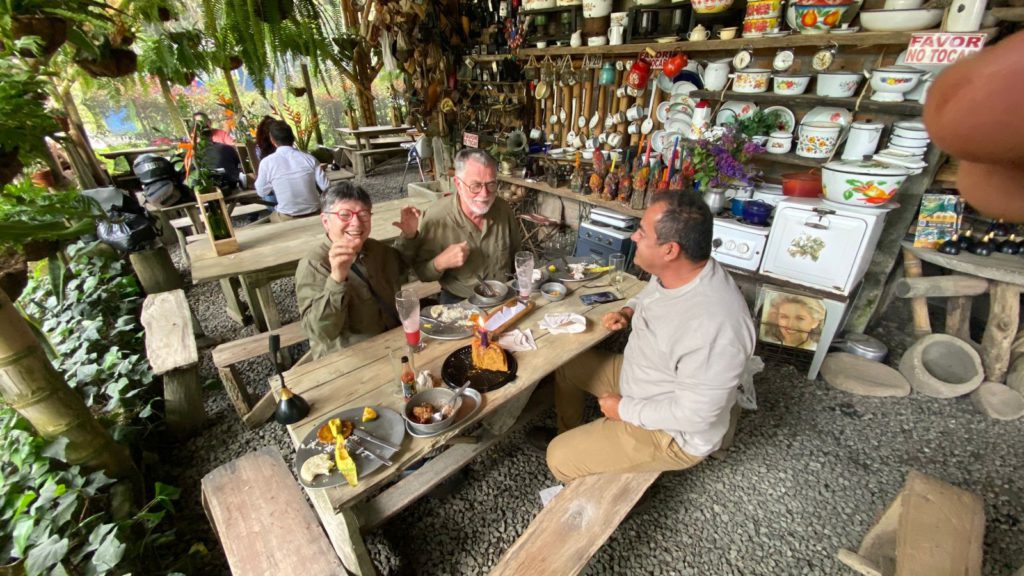
Celebrating Juan Guillermo Birthdays at Yerbabuena
Day 6: Rioblanco Watershed
Manizales is the hometown of Manuel, and also the city is pioneer in ecotourism in Colombia, one of the best places to see antpittas in feeding stations, the town is surrounded by forest and there is altitude gradient with a lot of different ecosystems. We depart at 5.30 am to Rio Blanco Watershed, a forest reserve protected since the 40 by the Town of Manizales this place provide potable water to the town, inside the reserve there is a private land called The Owl Watch, we meet the park ranger at the parking lot to start birindg, our first sighting slaty finch follow by masked trogon, green and black fruiteater, capped conebill, gray-headed bush-tanager, blue- winged mountain tanager, Sharpe´s wren and green jay(inca), we told our driver to wait for us in the restaurant and we start wlaking our way through the reserve, with the skillful use of the recorder and the mic we found a couple of Masked saltators, we arrive at a feeding station inside the forest, black-billed mountain-toucans show up to eat grapes and we eat our breakfast picnic style inside the forest, after this 2 stops at antpitta stations for: Chestnut-Crowned and Brown-Banded antpitta, we meet our driver in the restaurant for lunch enjoying the hummingbird feeders.
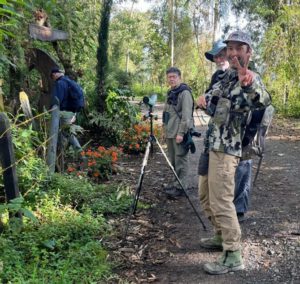 Owls watch gate Right |
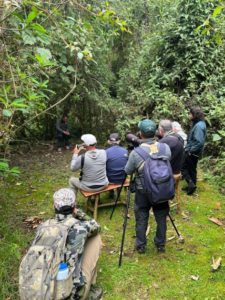 Antpitta Station |
Day 6-7: Hacienda El Bosque and Los Nevados
Early departure for more antpitta feeders at hacienda El Bosque(milk farm at 1000 feet), Ecuatorial and Crescent faced antpitta show up, also gray-breasted mountain-toucans and andea guans, after this stop we continue to los nevados national park at 12000 feet, we stop in several times in the way up to soak up the scenery of the Paramos or the Moorlands, some birding in the fog and time to get use to the altitude, we reach the 12000 feet and drive down to 10000 feet to our hotel, termales del ruiz, luxurious thermal springs with a hummingbird feeders and elfin forest, during the afternoon we resume birding searching for rainbow-bearded thornbill, purple-back hummingbird, black-thight puffleg, golden-breasted puffleg, black-back bush-tanagers and more high altitude specialties, but we also enjoy the thermal springs and amenities of the hotel.
Next day we resume birding early in the morning: a couple of Andean condors, buffy helmet hummingbirds, noble snipe and beautiful sceneary, the paramos of Colombia offer beautiful postcard opportunities, we drive our way through the cauca valley again with one stop for a coffee tasting in the town of Santuario and we arrive at night to Pueblo Rico.
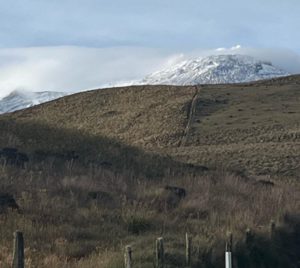 Los nevados national park and the paramo ecosystem |
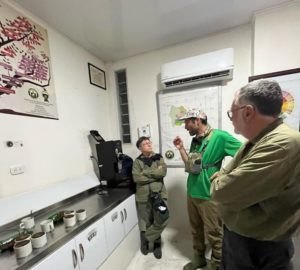 Coffee Tasting in the Town of Santuario |
Day 8-9-10: Montezuma road and Tatama National Park
Leaving the town of Pueblo Rico we head into the Tatama National Park in the Western Andes, in the foothills of the park we stay for the next 2 nights in the Montezuma Rainforest Lodge, we meet our local guide Jousmann, and start 3 days of intensive birding, during this 3 days we cover 12 km of road from the lodge to the military base in the top, every day we spend all day birding in the road searching for our targets and waiting for windows in the weather(remember this is the rainforest) during the day we also look at the butterflies and the orchids, some mammals and a in the general of all the biodiversity, we also share time with a filming crew from France and experience the Colombian rough roads throught forest, this place was a war zone in the early 2000 and now is a ecoturism heaven, some of our sightings all in red: black solitarie, gold-ringed tanager, black-and-gold tanager, beautiful jay, tatama tapaculo, chestnut-bellied flower piercer, olivaceus piha, rufous-headed pigmy-tyrant, velvet-purple coronet, ochre-breasted antpitta, bicolored antvireo, uniform treehunter, golden-collared honeycrepper, club-winged manakin, scarlet-and-white tanager, choco vireo, orange-breasted fruiteater, violet-tailed sylph and much more. We continue birding until our last afternoon enjoying the megadivesity of the place tired but happy we drive our way to pereira to catch a plane to the Caribbean Coast.
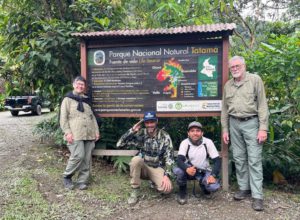 Tatama National Park |
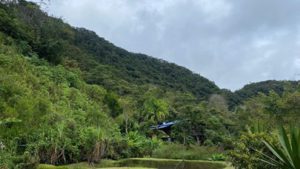 Monetzuma Rainforest Lodge |
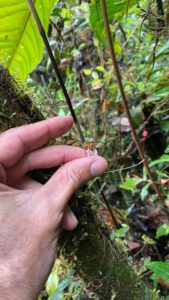 Masdevalia hortensis, A Colombian endemic orchid |
|
Day 11: Salamanca Santuary and the town of cienaga.
Our new driver Jefferson, pick up us In the tow of Barranquilla and drive us to the Salamanca Santuary, part of the National Park system, where we meet Omar, Park Ranger and Local Guide, Omar is a skilled birder and environmentalist that been involve with the national park for more than 20 years, the sanctuary is a mix of mangrove, dry forest, marsh and coastal ecosystems and a extremely important place for the local economy and regional economy, Omar guide us through the national park showing us the targets like: saphire-bellied hummingbird, bicolored conebill, panama flycatcher, a rare endemic mammal: Speckled spiny tree-rat, (a rare endemic and one of the targets of conservation of the national park) at noon we say goddbye to omar and head to the town of cienaga for lunch, Cienaga is one of the oldest towns of Colombia, founded in 1521, full of history is part of the writings of Gabriel Garcia Marquez like 100 years of solitude and the Leaf storm. We enjoy the colonial hotel buid it in 1921, a walk through the downtown a and the local cuisine for the rest of the day.
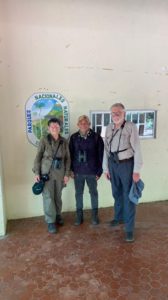 Peter and Jennifer with Omar in Salamanca |
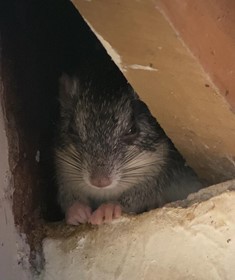 Speckled Spiny Tree Rat |
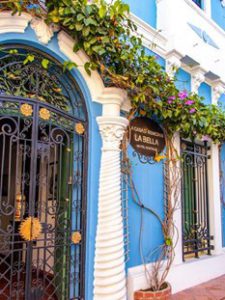 Hotel at Cienaga |
Day 11(easy day): Palafitos and Large Marsh of Santa Marta National Park
Next to the Town of Cienega we found the Cienaga Grande De Santa Marta National Park, swampy marsh, mangroves and a coastal lagoon with a area of 1650 square miles, the place is also the home of the amphibian people, communities of fisherman who live in the middle of the lagoon, a important place for the environment and economy been neglected for decades and suffer direct consequences of the armed struggle, during the day we meet Gaby, a local ecotourism entrepreneur, who show us the way of life and the realities of the place, for the day we stop birding and focus on people, history and culture, Gaby show us the way of life and the history of the place, also we visit the church, a place of memory of the war, in the early 2000 an extreme right paramilitary group committed a massacre against the people here, 37 fisherman lost their lives. This visit was significative for the visitor and the people been visited, for us it was a nice break of the birding and a way to recharge to the days ahead.
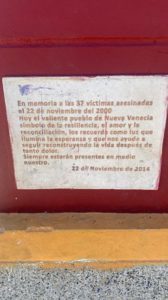 Commemorative plate of the 2000 massacre |
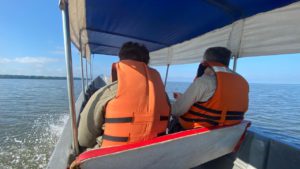 Navigating the Coastal Lagoon |
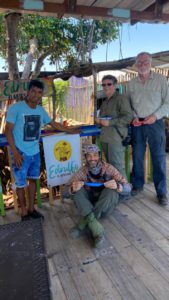 Handcraft workshop with Adrulfo, Local Handcrafter |
Day 12-13-14: The Santa Marta mountains, from the sea to the cloud forest.
As usual we leave at 5 am in direction to the town of Minca in the foothills of the Santa Marta Mountain Range, the place with the highest continental endemism in birds, we spot in the dry and riparia forest of the low parts close to the town of minca: rufous-and-white wren, ruddy woodcreeper, white-bearded manakin, pale-breasted hermit, scrub greenlet, black-crested antshrike, black-chested jays, buff-wrested wren and we start our way up the mountains birding our way up, our destination is in the coffee belt, next to the Hacienda Cincinnati, Place were Orlando Fly(expat from Ohio) introduce successfully coffee plantations, Also the famous entomologist and ornithologist Melbourne Carriker make most of his carrier, Carrikier marry Myrtle Fly, Orlando Fly daughter, and stablish a coffee plantation next to Hacienda Cincinnati. During the next 3 days we going to be birding in this place going as 8000 feet high at Cerro Kennedy trying to see the highest quantity of endemics this place has to offer, after arrival to our lodge Mountain House, we start birding in the gardens and the road until late afternoon: Santa Marta tapaculo, Santa Marta blossoncrown, Santa Marta brushfinch, Sierra Nevada brushfinch, lazuline sabrewing, blue-naped chlorophonia, black-headed tanager, bay-and-green tanager, boat-billed flycatcher, rusty-breasted antpitta and much more in hummingbird and tanager feeders at the lodge, heavy rain start and we come back to the lodge for dinner.
Next Morning we leave at 4 am, the 8 km to the top of the hill are truly a adventure and take us 1:30 hours to get there, we arrive in darkness and position the scope in a dead Sacred Wax Palm (Ceroxylum ceriferum) waiting for Santa Marta Parakeets, a couple of parakeets peek up through a hole and start flying at 5:30 am, during the wait we spot a couple of white-tailed start frontlet, we continue through the road enjoying the birdlife and the view: santa marta warbler, flammulated treehunter, santa marta antpitta, carrikers mountain-tanager, santa marta mountain tanager, hermit wood wren, yellow-crowned redstart, plushcap, rusty-backed spinetail, streak-headed spinetail, reb-billed parrots, paramo seedeater and scarlet fronted parakeets. After all this action thick fog cover all the visibility and we decide to start going down to the lodge, going down we stop in the middle of the way to see white-tipped quetzals, just in time as heavy rain start and continue through most of the day, at night we go out for the santa marta screech owl but not look we only heard him. The next morning we leave the lodge early to our next destination, the Guajira Peninsula, our idea is to go birding all the way, we start around the lodge with more targets: Santa Marta antbird and santa marta foliage gleaner, as we go down: Rosy-thrush tanager, Golden-winged sparrow, whooping motmot, Santa Marta tapaculo, spectacled tyrannulet and many more we continue our way to Guajira and spot next to the ocean called Gaviotas, we spot a couple of white-bellied antbird before been caught in heavy rain, we decide to continue all the way to guajira with heavy rain all along the way, our next destination Riohacha, Capital of Guajira State, we stay in a nice beach front hotel called Casa del Mar.
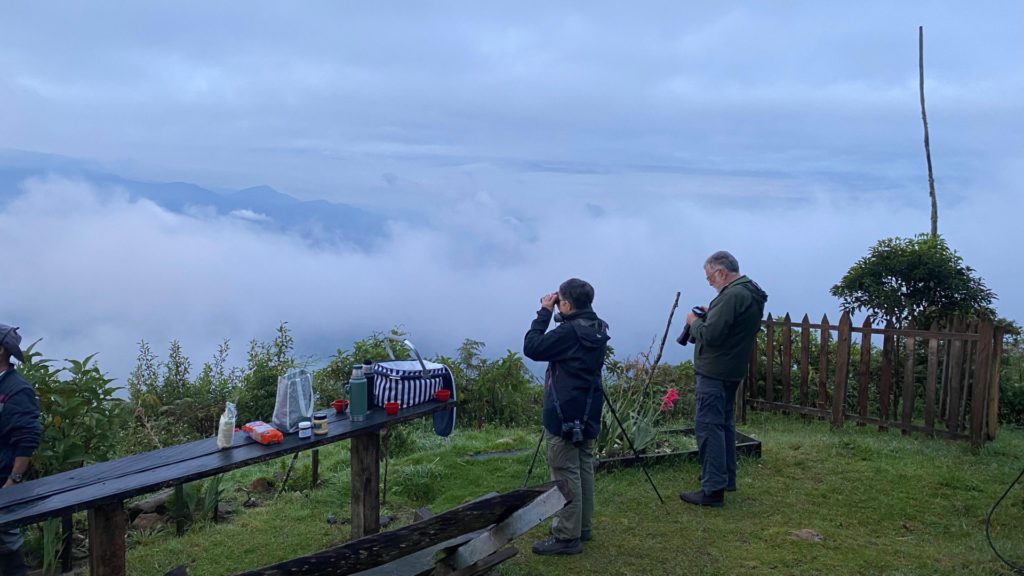
Peter and Jenny at San Lorenzo Ridge
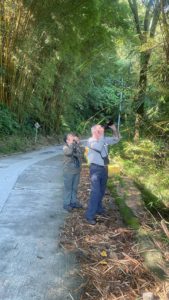 Birding in the Coffee Belt |
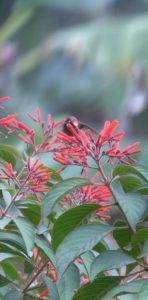 Santa Marta Blossomcrown |
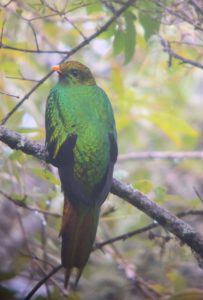 White-tipped quetzal |
Day 15: Guajira peninsula.
Early as always we leave the hotel to the Los Flamencos Sanctuary, part of the National Park System, we meet our local guide Alvaro and head it to the dry forest, this place is the dryest of Colombia, a 400 mm of rain per year, but been raining during the last month so all the dry forest is green and lush, full of birdlife: Vermilion cardinals, pale-tipped and slender-bill tyrannulets, white-whiskered spinetail, tocuyo sparrow, chestnut piculet, the mega rare chestnut-capped cuckoo, ferruginous Pygmy-owl, lessons seedeater, glaucus tanager, red-billed emerald, shinning-green hummingbird, rubby topa´z hummingbird, Buffy hummingbird, Orinocan Saltator, white fringed antwren, northern scrub flycatcher, pileated finch and much more, thanks to the rain the forest was full of life, at 10 am we decide to go to the coastal lagoons to search for American flamingos and a lot of shorebirds, gulls, terns, plovers and birds that only the specialized eye of Alvaro can identify for us, at 11 am the thermometer is already at 92 F, we decide to call it a day, tip Alvaro and head back to the hotel for a last shower before to our fly to Bogotá and our Farewell Dinner, we arrive at bogota late at night, our hotel just 10 minutes from the hotel offer us a great place to make the last checklist, enjoy our last dinner and make some reflections about the tour.
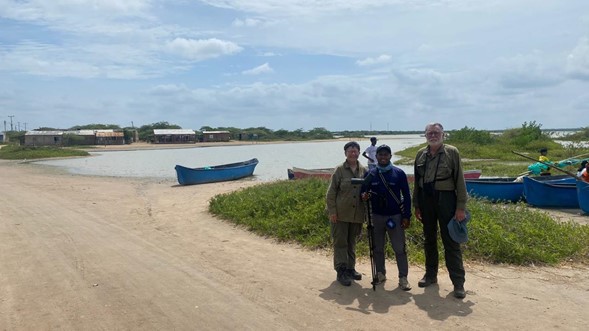
Guajira peninsula
Reflextions:
During 15 days we SEE 457 species of birds, cross the Cauca valley 2 times, visit places were embassy’s don’t want any of you, we experience all the ecosystem from sea level to 12000 feet, stay in a mix of places from family run bed and breakfast to places like the Hilton, but some of the most significative time was the time spend with our driver Juan Guillermo, a business man from Pueblo Rico been driving for birders since the 2000, was kidnapped by rebels 25 years ago. He took us to dinner with his family and organize coffee tasting experience for us. He was a real ambassador of the country to Peter and Jennifer the real Colombia.
|
Drivers:
|
Local Guides:
|
“Our Brains were full at the end! Manuel our guide was fantastic. We certainly enjoyed his company and commentary on Colombia, its people and its customs”
Peter & Jenny Allsopp Sep 24,2025

